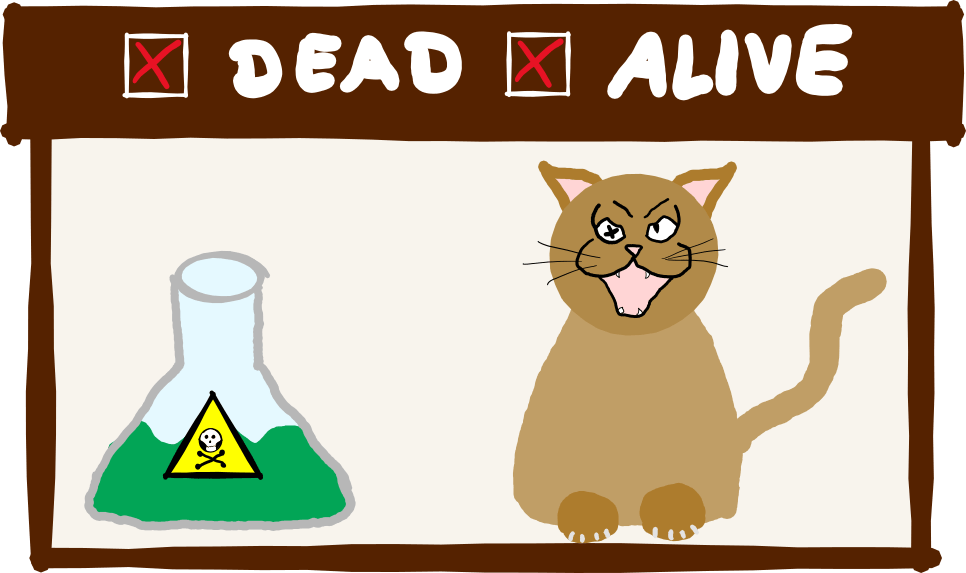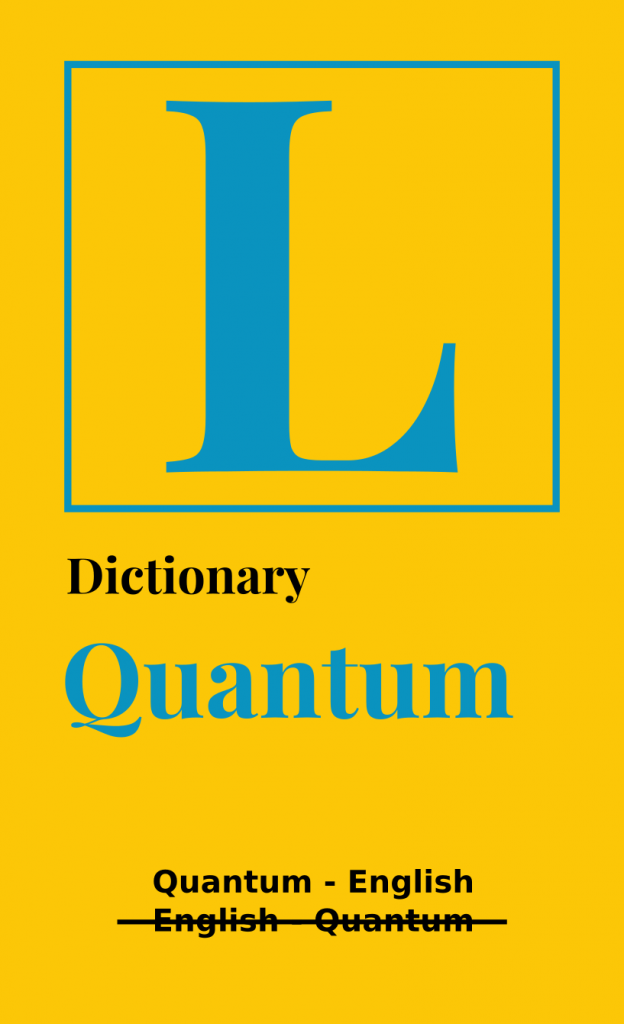Schrödinger’s cat is considered the mascot and heraldic animal of quantum physics. Ever since Big Bang Theory, at the latest, it has also been tapping into the living rooms of non-physicists. But as popular as she is, most people don’t really understand what she’s all about. Since Christmas is just around the corner and I strictly reject animal testing, I decided to do it a little differently: Let’s help Santa Claus and find out if a child is good or bad.
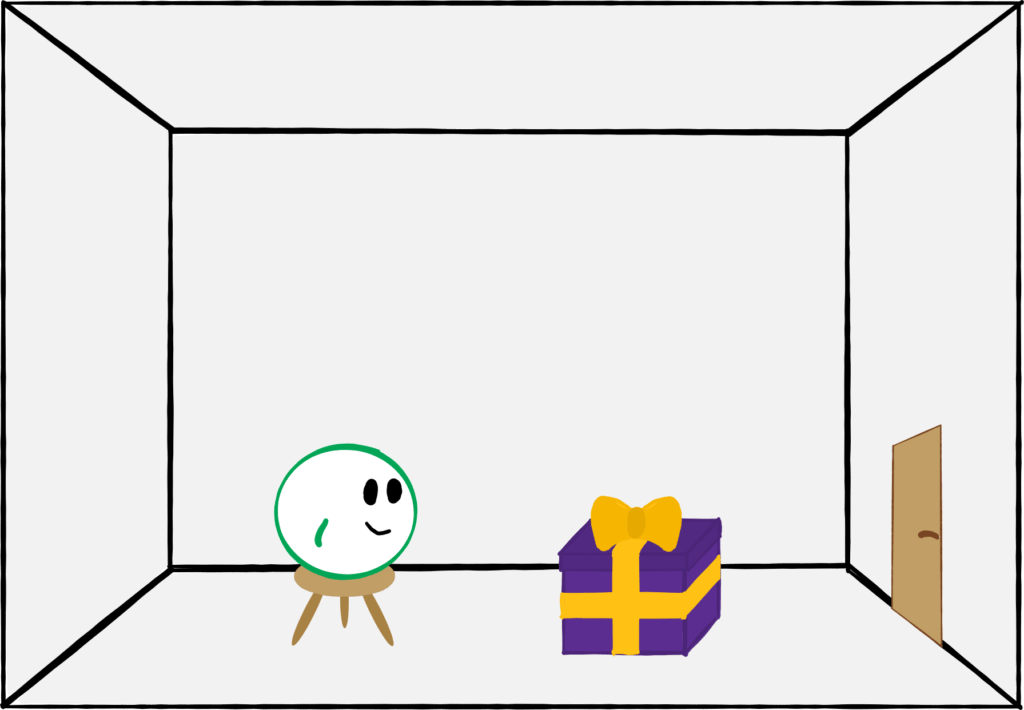
Let’s imagine the following situation: Santa Claus checks his naughty-or-nice list, as he does every year. But some children are difficult to put into one category because they are sometimes good, but sometimes naughty. For these cases of hardship, Santa has thought of a test. He puts the child in a room together with a Christmas package. He tells the child to wait until he is back and not to open the package. Then he goes out and locks the door. If the child is nice, it will wait and not touch the package. However, if the child is naughty, it will tear open the package. So, as soon as Santa Claus comes back, he just has to look at the package and immediately knows whether the child will get presents or coal this year.
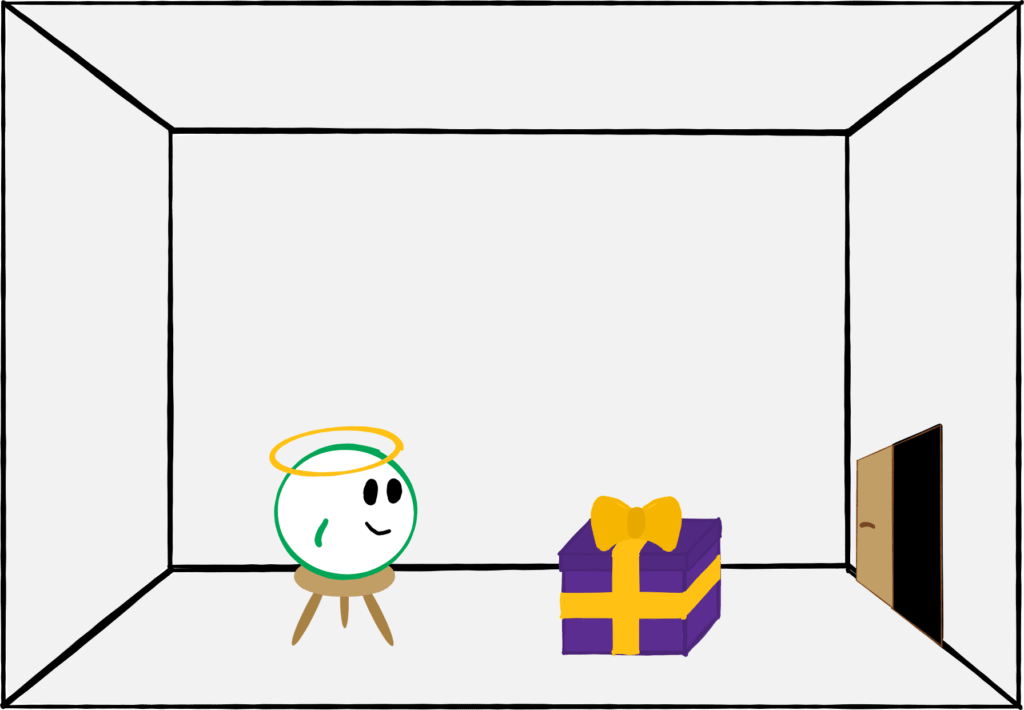
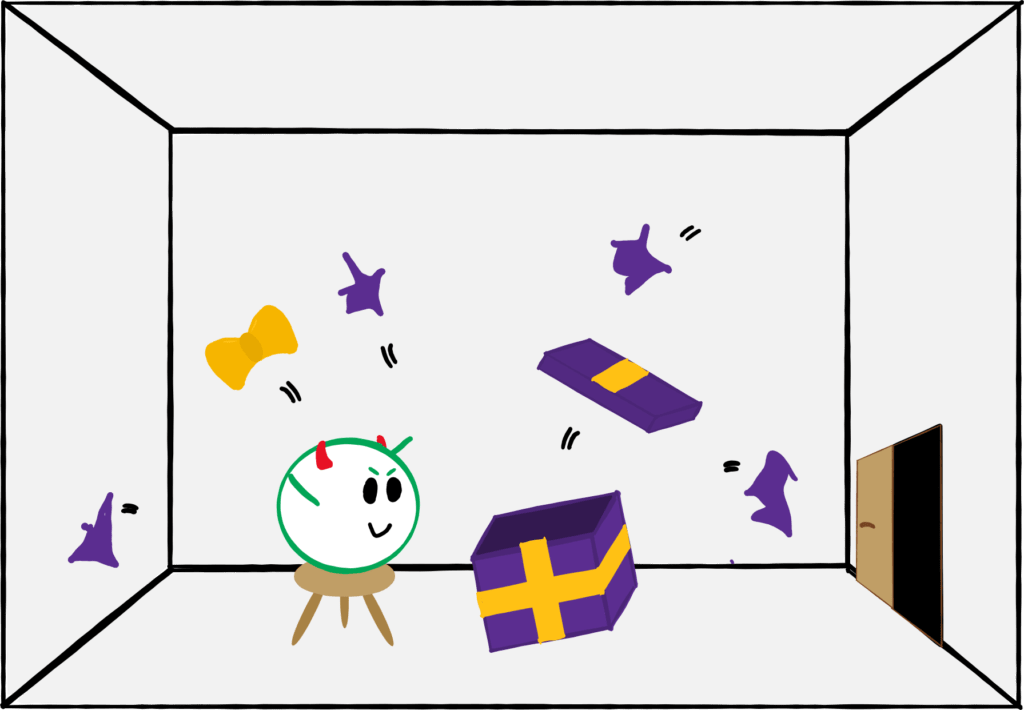
But what if the child is neither good nor bad, but somewhere in between? If the child is both nice and naughty at the same time? Consequently, in this case, the package must also be opened and closed at the same time. If you think now “She is crazy”, then you are of the same opinion as Schrödinger. Because Schrödinger did not want to show with his thought experiment about the trapped cat (the package) how cool quantum physics is – but how absurd.
Superposition and entanglement
A quantum child can be not only well-behaved or naughty, but both at the same time. We call this superposition. But what happens if we couple the quantum child to a large everyday object, like the package? If the child is half kind and half naughty, then the package is also half closed and half open. The state of intactness of the package depends on the child’s state of niceness – we say that the child and the package are entangled. Only when we open the door do the child and the package decide on a state, and only then do we know whether the child was nice or not.
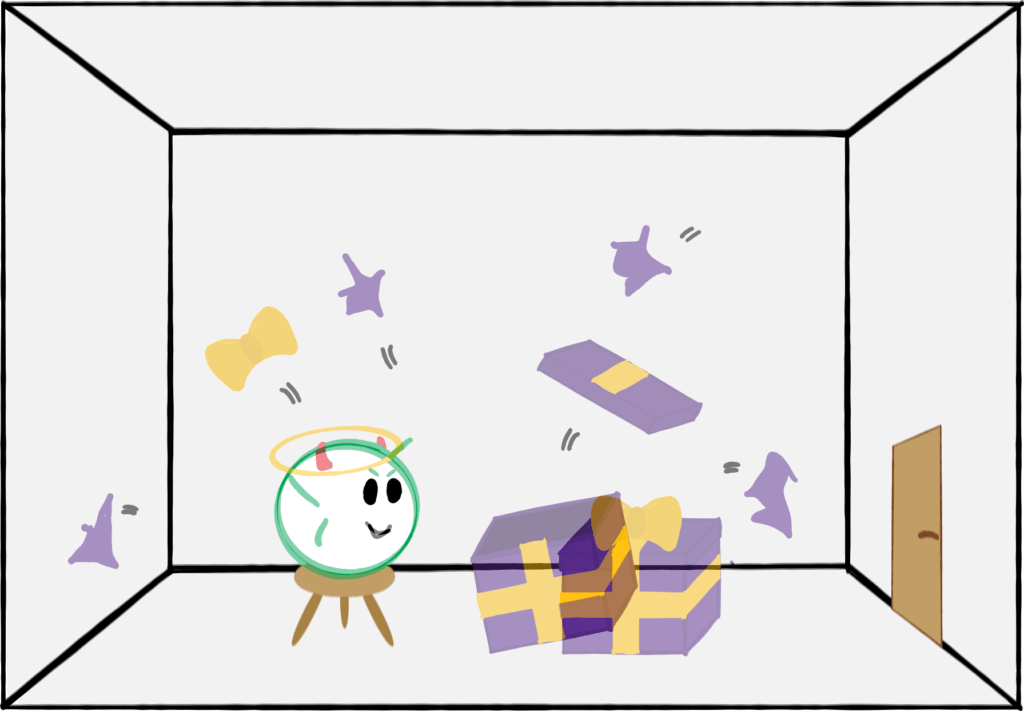
Now you could say: “I always have to open the door first to know what has happened in a room. What is so special about it now?” The difference is: even the child doesn’t know whether it is being good or bad as long as the door is closed. I don’t just lack knowledge of what’s happening in the room – it hasn’t been decided yet.
Schrödinger’s cat
Schrödinger presented this thought experiment in 1935 with a cat and poison instead of a package and a child. Schrödinger puts – in his mind – a cat together with a vial of poison into a box. There is also a radioactive substance (the child) in the box, which will eventually decay (turn naughty). Once that happens, a detector triggers a mechanism that destroys the poison vial and kills the cat (unwraps the package).
Unlike naughty or nice children, the decay of a radioactive atom is a purely quantum mechanical process. The atom is in a superposition of decayed and not decayed. Consequently, the cat must also be dead and alive at the same time. Again, it is only when we open the box that we decide whether the cat is dead or alive. This is mainly based on experience: no one has ever seen a half-dead-half-alive zombie cat.
Quantum-English / English-Quantum
When Santa Claus walks into the room again, he demands a clear answer: well-behaved or naughty. Overlaying is no longer an option. And the exciting thing is: the quantum child decides completely at random for one of the two options. If it was initially half nice and half naughty, then it will open the package with 50% probability. Nothing and no one in the world – not even Santa Claus or the child itself – could predict whether the child will be good or naughty after opening the door.
From a physical point of view, opening the door is a measurement: we measure the state of the child. And measurements only work in the language of classical physics: a pointer position, a number on the display, a click. A detector cannot click “a bit.” Santa Claus makes his cross at well-behaved or naughty – never in between. The measurement process is, in other words, a translator from quantum language to our classical language. The special thing about it: the translation cannot be reversed. In the translation, all quantum information is destroyed: superpositions, entanglement. What remains is purely classical information.
Matter of interpretation
If there really are such wacky phenomena in the quantum world as superposition and entanglement, Schrödinger asked himself, why do we never observe them in everyday life? After all, our world is made up of quantum particles. And anyway, what’s with the random result of the measurement (the opening of the door)? Is quantum theory not deterministic, that is, are the outcomes of experiments unpredictable? Did the quantum child perhaps know all along how it would decide; was this information just hidden from us?
These are just some of the questions that physicists like Schrödinger continue to rack their brains over to this day. There are several attempts to explain the phenomena of quantum physics. I would like to introduce the most popular (or most adventurous) ones to you now.
Copenhagen Interpretation
“The best explanation is no explanation“
The Copenhagen interpretation is the most common interpretation of quantum physics. It was founded in 1927 by Niels Bohr and Werner Heisenberg, among others, while they were working together in Copenhagen – hence its name. It was also the first interpretation of quantum mechanics and led to more philosophical thinking in physics.
The short version of the Copenhagen interpretation is “Shut up and calculate!”. In other words, don’t ask too many questions and be happy that the theory works. The Copenhagen interpretation states that the mathematical formalism of quantum theory has no “real-world” equivalent. In classical physics, each formula symbol corresponds to a real quantity. For example, the m is the mass of a body. Quantum mechanical states, on the other hand, are not real – I cannot feel it or point to it – but they serve only the purpose of calculating the probability of the outcome of a measurement. The superposition state of the quantum child allows us to calculate the probability of the child being well-behaved or naughty when the door was opened. And that is what we have to be satisfied with.
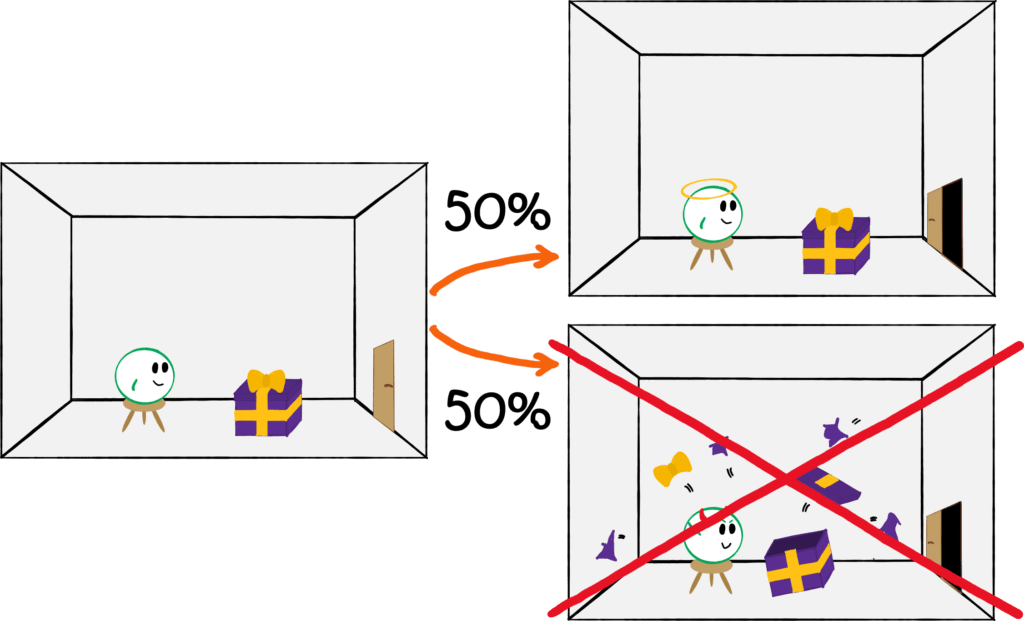
Ensemble interpretation
“On average, it’s right”.
According to the ensemble interpretation, quantum theory is incomplete. That is, it cannot predict how a single quantum child will behave in the package test. It can only predict how a large group of children will behave on average. This interpretation is not very popular, since we would like to have a complete quantum theory. That is, a theory that can also predict the behaviour of individual particles. Incidentally, a well-known proponent of the ensemble interpretation was Albert Einstein – the great critic of quantum theory, for whom it would be perfectly fine if quantum theory turned out to be incomplete.
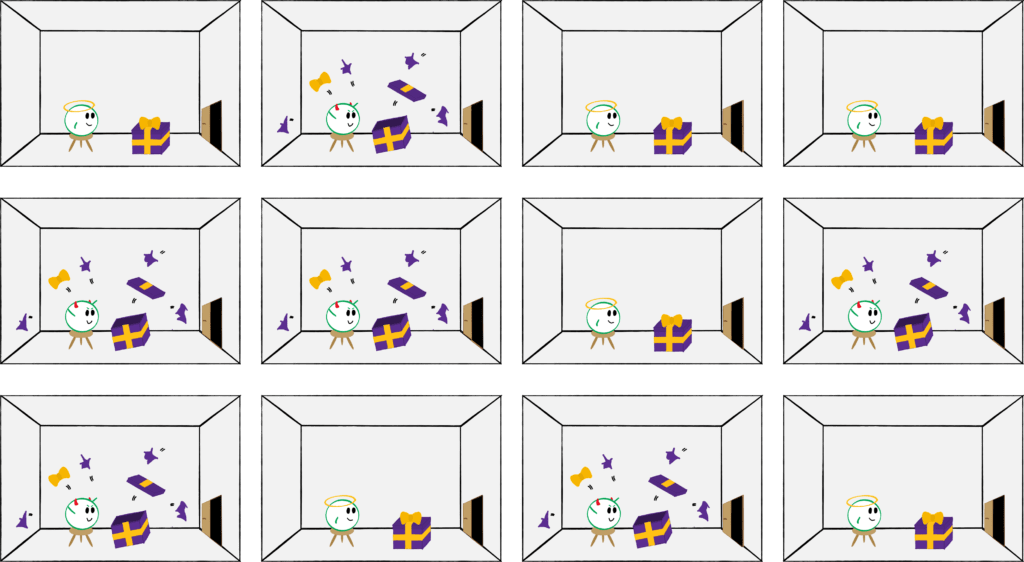
Many-worlds interpretation
“Are we alone?”
This is probably the theory most often made fun of. It states that both cases occur in the package test, that is, that the child is actually well-behaved and naughty. However, this does not correspond to our everyday observation that packages can only be opened or closed. But there is a “simple” solution: our reality splits into two worlds. One where the child is well-behaved, and one where the child is naughty. Understandably, this theory is very controversial – it just sounds absurd – but it has not yet been disproved.
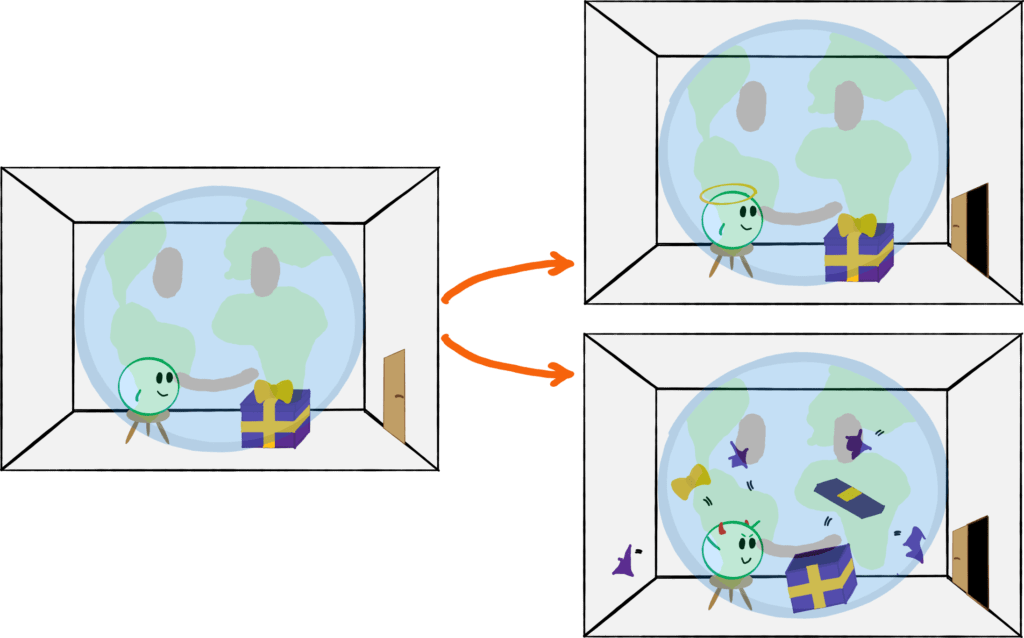
Transactional interpretation
“The handshake with the future”.
This theory can hold a candle to the many-worlds interpretation in terms of craziness. It explains quantum mechanical interactions by waves that travel back and forth in time. When two particles interact, they both send out waves into the future and into the past. These waves overlap and the particles do a kind of handshake through time. The child of now sends out a wave that overlaps with the wave of the package from the future. They interfere and what remains is a measurement result: the package is open or closed.
The reason this sounds so strange to us is that we are “within time”. From our perspective, time is asymmetrical. We can only go forward, but not back. Standing outside of time, however, everything is quite easy. Now if your head is buzzing and you’re thinking “Huh?” — let me assure you, you’re not alone (I’m sure there’s another world out there where you’re just as confused as… you).

Clear results thanks to noise
Let’s return from the wonderland behind the mirrors to our package test. There is a simple explanation for why we do not experience superposition in everyday life. It is similar to the reason why pendulums do not swing forever, and a perpetual motion machine does not exist. The reason is: a system is never completely closed from its environment. There is noise, heat, and friction everywhere. The quantum mechanical counterpart is called decoherence.
Coherence is necessary for the quantum child to exist at all in a superposition of nice and naughty. Decoherence is the opposite: it breaks the superposition. Decoherence happens whenever the quantum child is disturbed. For example, if I poke it with a stick until it either snaps (and becomes naughty) or politely asks me to stop (and becomes nice). The child in the room with the present may hear footsteps outside the door and it stays well-behaved because it expects Santa to come back.
Decoherence explains why we never find everyday objects – like children, packages, or cats – in a quantum mechanical superposition. Air molecules, sound waves, thermal radiation – all these act on the objects and destroy superpositions even before they are created. An object is more susceptible to decoherence the larger it is. This is why we find radioactive atoms and photons in superpositions, but cats and gift packages do not.
The point Schrödinger was trying to make with his thought experiment, simply put, is that it is not easy to reconcile quantum physics with our everyday experience. And that has not changed to this day. None of the interpretations is right or wrong. We cannot look into the cards of God (or the flying spaghetti monster) and find out what is behind them. Someday, some genius may find an experiment that finally shatters all but one theory. But until then, quantum physics offers room for deep, philosophical conversations over mulled wine and cookies that may have been hidden in Santa’s package.
Do you like what you read? Then you can buy me a coffee here! And if you don’t want to miss any new posts don’t forget to subscribe to my blog.

